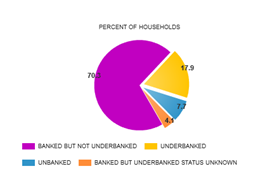Promoting and growing Remote Deposit Capture (RDC) within your institution requires a commitment from top management. The enthusiasm and support system for the RDC Program must radiate from top management all the way through the institution to include the frontline tellers. RDC success includes the following seven elements:
- Perpetual focus and commitment from the top down;
- Ongoing education of employees and customers;
- A central contact person who has taken ownership of the RDC Program with a passion for its success within the organization;
- Consistently applying techniques and ideas outlined in this article;
- Established target goals and an action plan that are reviewed at regular meetings;
- Holding individuals responsible for targeted growth; and
- A marketing and sales program.
Remote Deposit Capture can be known by many different names including: Remote Deposit, Personal Capture, Merchant Capture, or Corporate Capture. What name is your financial institution going to use or are you going to develop a new flashy marketing name? Either way people need to know what it is and how it works to properly implement the service in the bank. We suggest that you stick with the standard Remote Deposit Capture this will avoid confusion when customers call.
Growth of RDC will help keep customers happy, safe and more profitable. RDC is one of the greatest time savers a business could implement in regards to its banking relationship. By not needing to go to the bank to make a deposit keeps employees safe. They can make the deposit in the office, and it saves drive time to the bank and back, (let alone keeping another car off the road, it's good for the environment). So, as banks promote paperless statements - they can also promote green deposits by using RDC.
RDC is the future. Banks that have a good working relationship with its personal and business customers can make it stronger with RDC. Some banks allow customers to use basic scanners to make deposits - not needing any special equipment - makes the process easier and less expensive to implement. Less cost means more profit for both the customer and the bank. As we deal with more and more electronic transactions, will RDC be the standard for old fashion paper checks? Everything we read and hear, it is moving that direction
To learn more about RDC and ideas about how to grow it in your institution download our FREE white paper by clicking HERE.
Author: Carolyn C. Dowdy, President of Bank Project Solutions http://bankprojectsolutions.com/



